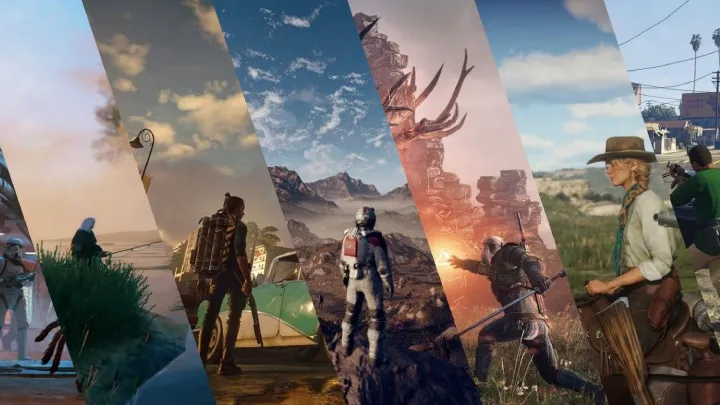The Legend of Zelda: An In-Depth Analysis of the Role of Music in Breath of the Wild

"The Legend of Zelda: Breath of the Wild" is a landmark title in the gaming world, not just for its open-world design and gameplay mechanics but also for its innovative use of music. In this article, we will delve deeply into the role of music in "Breath of the Wild," examining how it enhances storytelling, creates atmosphere, and affects player emotions. Music is often an overlooked aspect of game design, yet in this installment of the Zelda franchise, it plays a crucial role in immersing players in the vast landscapes of Hyrule.
The Soundtrack: A New Direction
The Evolution of Zelda Music
The "Legend of Zelda" series has always been known for its memorable soundtracks, but "Breath of the Wild" takes a different approach. Traditional orchestral arrangements are replaced by minimalist compositions that reflect the open-world experience. Koji Kondo, a veteran composer for the franchise, collaborated with a new team that brought fresh ideas to the table.
Impact on Gameplay
This shift to a more subdued musical style allows players to focus on exploration and discovery. Unlike previous titles that relied on catchy, repetitive themes to guide players, the music here is often ambient and situational. This creates a unique atmosphere that encourages players to engage with the world around them.
Thematic Resonance: Music and Emotion
Evoking Nostalgia
One of the most powerful aspects of the music in "Breath of the Wild" is its ability to evoke nostalgia. Themes from earlier games in the series are subtly woven into the score, connecting players to their past experiences. For example, the use of the iconic Zelda theme in certain moments offers a poignant reminder of Link's long journey.
Emotional Landscapes
The music also serves to enhance the emotional landscapes of different regions in Hyrule. For instance, the serene melodies in the forests contrast sharply with the tension-filled scores in areas like Hyrule Castle. This musical diversity underscores the various challenges Link faces throughout his adventure.
The Role of Silence

Emphasizing Isolation
In stark contrast to the lush soundscapes, moments of silence are equally impactful. The absence of music in certain areas emphasizes the isolation and desolation that permeate the game. For example, when players enter the Great Plateau, the silence is deafening, making the vastness of the world feel even more daunting.
Enhancing Discovery
Silence also enhances moments of discovery. When players stumble upon a hidden shrine or a Korok seed, the sudden introduction of music heightens the joy of discovery. This deliberate use of silence and music creates a dynamic audio experience that keeps players engaged.
Interactive Music: Player Agency
Dynamic Soundscapes
"Breath of the Wild" features a dynamic music system that responds to player actions. As Link engages with the world—whether climbing a mountain or battling a Lynel—the music shifts to reflect the situation. This interactivity immerses players in the emotional arc of the game, making each encounter feel unique.
Emotional Feedback
This responsive music system also provides emotional feedback to players. For instance, the music swells during climactic battles, creating a sense of urgency. Conversely, the gentle melodies during exploration encourage players to take their time, reinforcing the game's themes of curiosity and wonder.
Cultural Influences in the Score
Incorporating World Music
The musical score of "Breath of the Wild" is not only innovative but also draws upon various cultural influences. The use of traditional Japanese instruments, such as the shakuhachi (a bamboo flute), adds a layer of authenticity and depth to the game's soundscape.
A Global Sound
By incorporating diverse musical styles, the game reflects the vastness of Hyrule itself—a world filled with different cultures and histories. This global sound palette enriches the player's experience, making the world feel more alive and interconnected.
Environmental Sounds: The Unsung Heroes
Complementing the Score
While the music often takes center stage, environmental sounds play a crucial role in building immersion. The rustling of leaves, the chirping of birds, and the distant sounds of Hyrule's wildlife create a rich auditory tapestry that complements the score.
Creating Atmosphere
These environmental sounds contribute to the game's overall atmosphere, making each region feel distinct. For example, the sounds of a bustling village differ greatly from the eerie silence of a haunted forest, enhancing the player's sense of place.
The Significance of Character Themes
Individual Motifs
Each character in "Breath of the Wild" has a distinct musical motif that reflects their personality and role in the story. For instance, the ethereal theme associated with Princess Zelda encapsulates her wisdom and strength, while the more aggressive themes linked to villains like Calamity Ganon heighten the sense of danger.
Building Connection
These character themes help to forge an emotional connection between players and the narrative. As players encounter these characters, their themes evoke specific feelings and memories, enriching the storytelling experience.
Music and Gameplay Mechanics
Influence on Game Design
The integration of music into gameplay mechanics is one of the most innovative aspects of "Breath of the Wild." Players often find that specific actions or locations trigger unique musical cues, enhancing the sense of discovery.
Encouraging Exploration
This connection between music and gameplay encourages players to explore every nook and cranny of Hyrule. The anticipation of hearing a new musical cue serves as motivation to investigate hidden areas, making exploration feel rewarding.
The Future of Music in Gaming
Setting a Precedent
"Breath of the Wild" has set a new precedent for how music can be utilized in video games. Its innovative approach encourages other game developers to rethink their sound design, focusing on how music can enhance storytelling and player engagement.
Impact on Future Installments
As the Zelda franchise continues to evolve, the lessons learned from "Breath of the Wild" will likely influence future titles. The balance between music, silence, and environmental sounds will remain a crucial aspect of game design, ensuring that players remain immersed in their virtual worlds.
Conclusion
In conclusion, the music of "The Legend of Zelda: Breath of the Wild" is a masterclass in how sound can shape the gaming experience. Through its innovative use of minimalist compositions, dynamic soundscapes, and cultural influences, the soundtrack not only enhances gameplay but also deepens emotional connections with the story and characters. As players traverse the vast landscapes of Hyrule, the music serves as both a guide and a companion, enriching their journey in ways that are both profound and unforgettable.

















